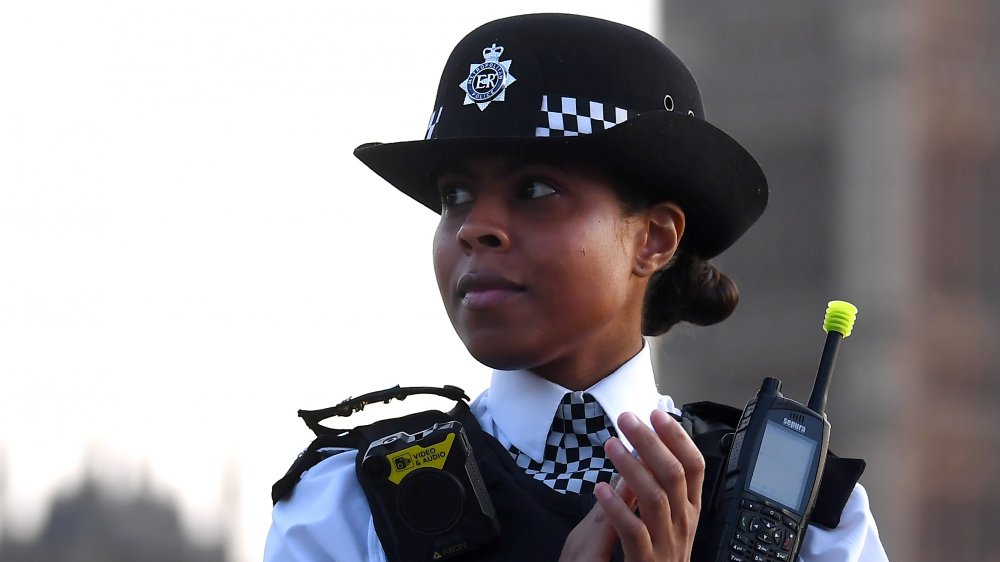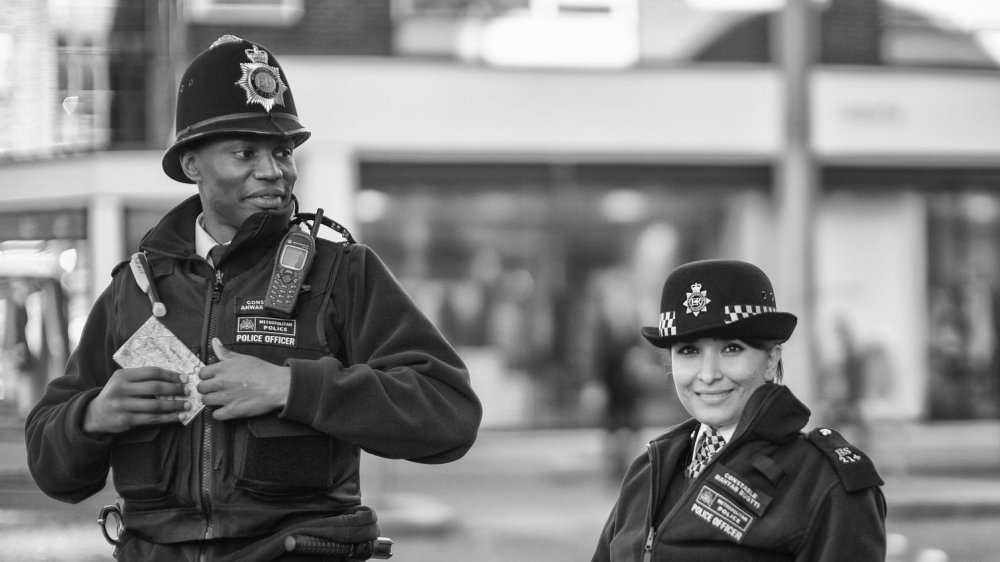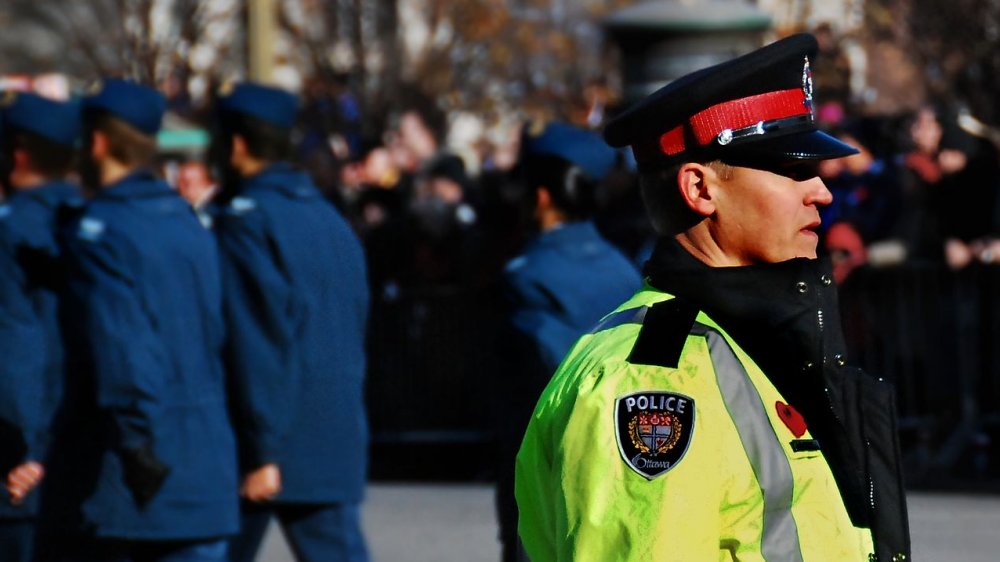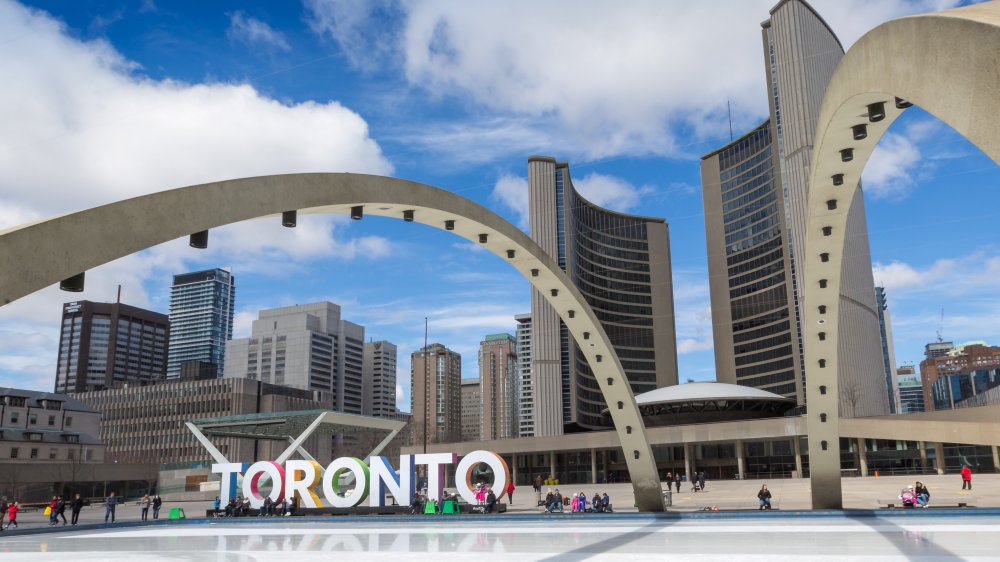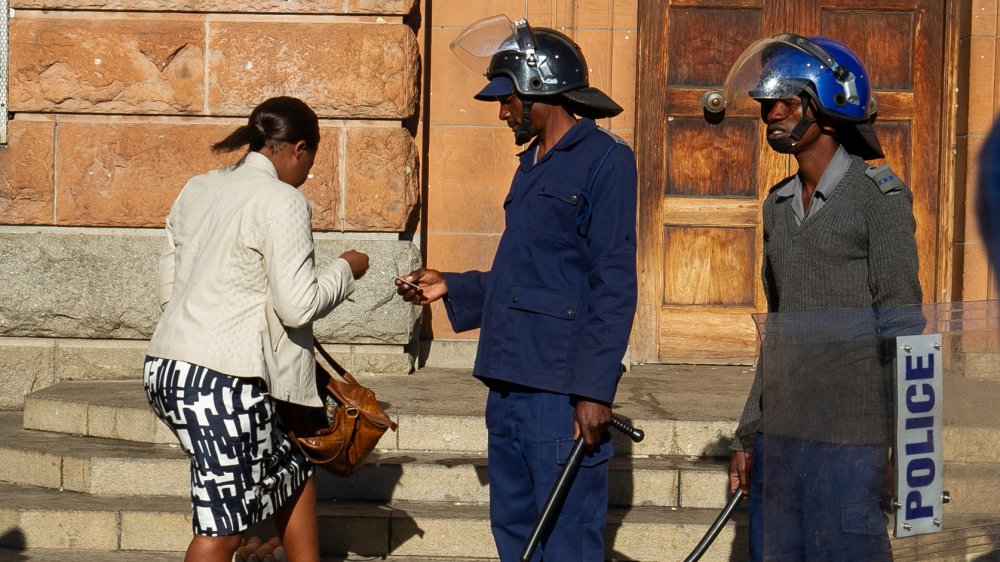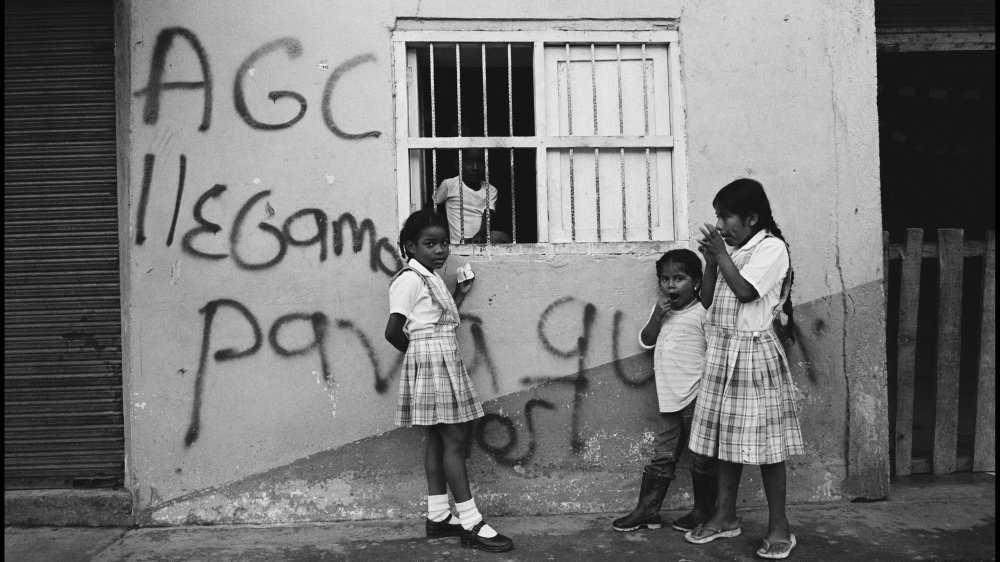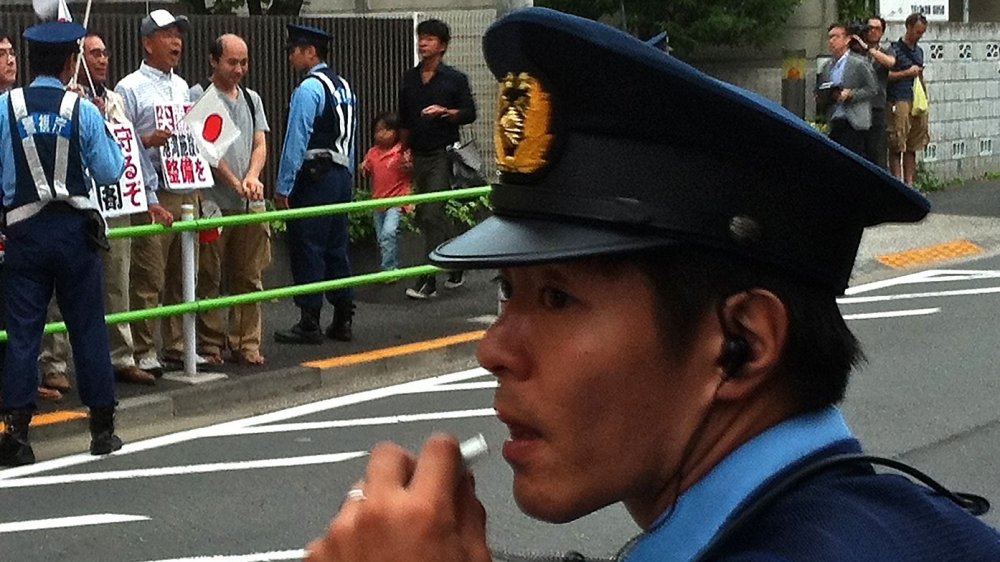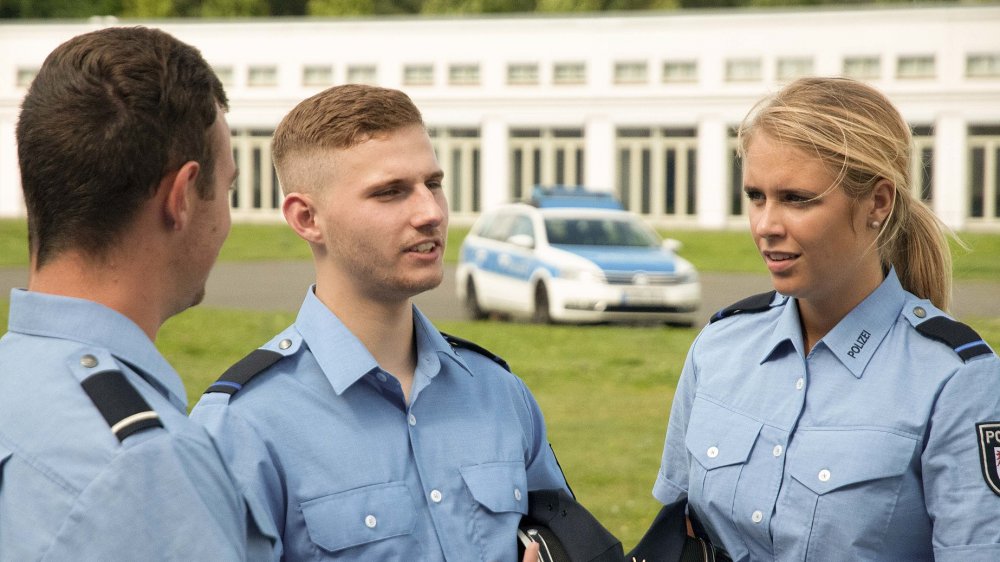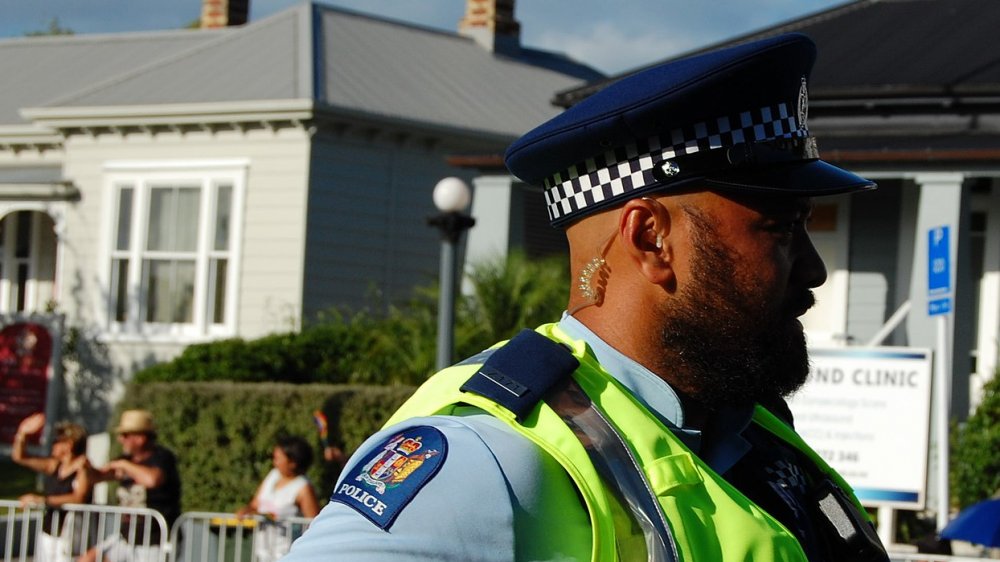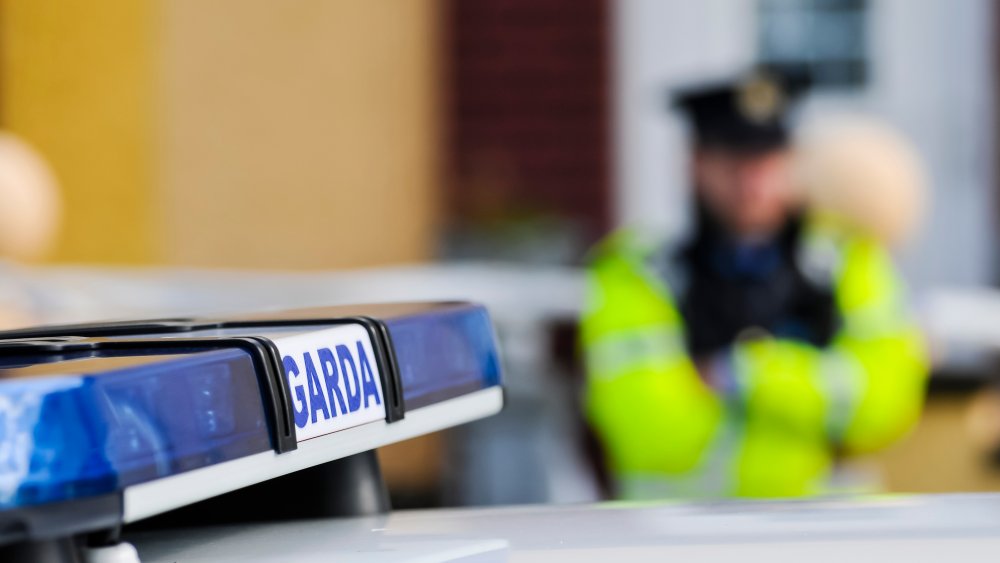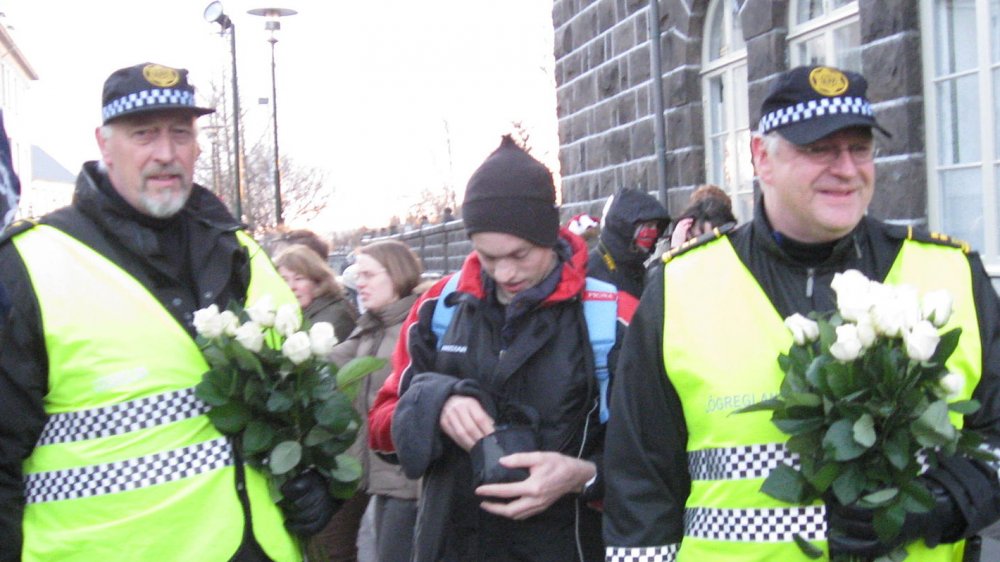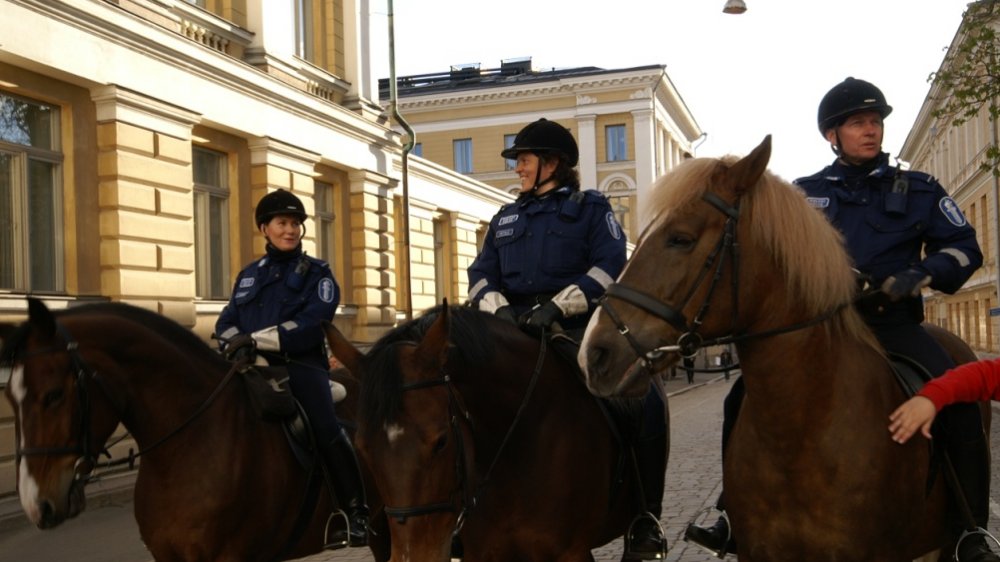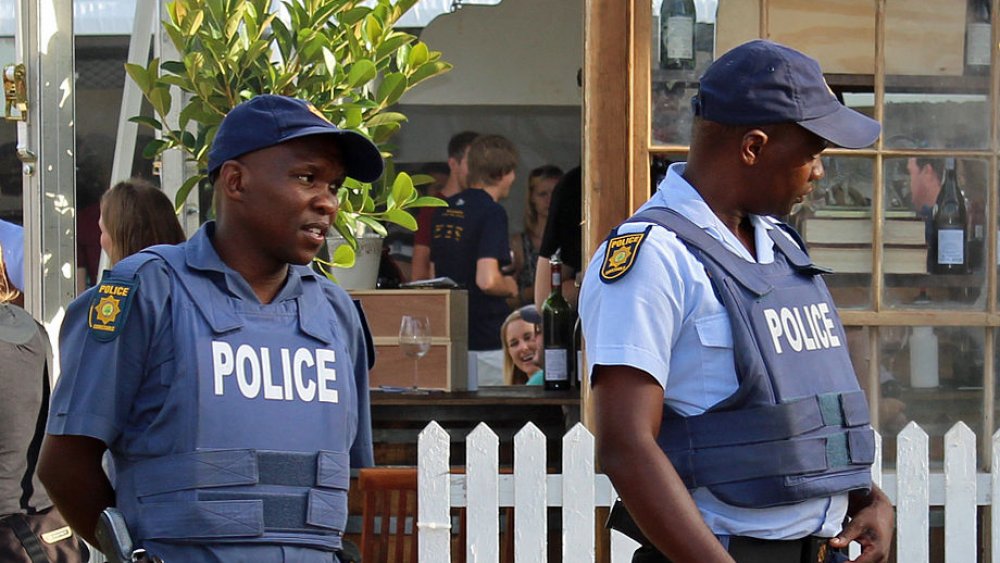What Alternative Policing Looks Like In Countries Around The World
"We've always done it this way" is not sound public policy, particularly not when it comes to law enforcement, where people's lives and freedoms are on the line. According to Statista, there's an upward trend in people being shot and killed by the police in the United States, with black people being killed at a much higher rate than other ethnicities. Police officers' lives are also increasingly at stake too, as the FBI's Law Officers Killed and Assaulted Program (LEKOA) shows an upward trend of police officers being killed in the line of duty.
But people on both sides of the badge being killed isn't the only problem. According to United Nations stats assembled by CNN, in the United States more people die in police custody, are arrested, and are imprisoned than in any other developed nation, with particularly higher use-of-force on black people. Amidst growing calls to "defund the police" or even "abolish the police," the question remains: how do we fix the criminal justice system?
Playing games of "whataboutism" won't work—but listening to others and looking at what other countries are doing can help. Reforming policing isn't a "one size fits all" process and not every alternative method works. Reform must take into account historical, social, racial, and mental and physical healthcare injustices as well. Where do we begin? By studying best practices and learning from others. Here's what alternative policing looks like around the world.
British police prefer not to carry firearms
The United Kingdom has a population of more than 60 million people, with nearly nine million living in England's capital, London. Yet despite packing this many people into a land mass smaller than 11 U.S. states, (plus a bloody history dating all the way back to Rome), British police don't routinely carry firearms. According to the BBC, this has been the case since the mid-19th century, when police were unarmed and wore blue uniforms to differentiate themselves from armed infantry in red uniforms. The idea of community policing stuck, even when police were allowed to carry firearms in the early 20th century.
While each police force has its own firearms unit, only trained officers who can demonstrate they need a gun get one, and front-line officers routinely don't carry firearms. And they don't want to either, as British police believe being unarmed makes them more approachable, making the public comfortable being their "eyes and ears." While police in Northern Ireland carry guns, Quartz reports that only a fraction of the 124,000 police in England and Wales carry one, even among the 5,600 authorized carriers. Police only discharge their weapons a handful of times per year and when they do it's not without controversy. However, a police officer claiming to suffer from PTSD recently wrote an editorial for The Guardian saying "we've lost control of the streets," citing severe cuts to frontline civil service workers, including police, and a rash of knife-stabbings as the cause.
Canada has practiced restorative justice for 40+ years
Canada's reputation for being peaceful and polite has almost become a cliche. They're so sweet their flag has a maple leaf for crying out loud! This nice approach carries over to law enforcement too. While Canadian police officers do carry firearms, not every police force carries the same brand or style (CBC). Canada's criminal justice system is also noteworthy for a policy known as "restorative justice," which has been employed in the country for more than 40 years. According to the Canadian Department of Justice, restorative justice allows "parties directly affected by the crime –- victims, offenders and communities -– to identify and address their needs in the aftermath of a crime." Does this sound like a squishy, "soft on crime" policy? Actually, no.
More than retributive justice, which focused on punishing the offender, restorative justice focuses on empowering the victim. According to McGill Daily, restorative justice recognizes that crime is a violation of one person by another, not an act against the state. The distinction matters. Victims are given a forum to address how the crime has impacted their lives, while offenders are encouraged to take personal responsibility. Citizens form a consensus to deliberate and determine whether an offender goes to jail. The power is literally with the people. The process is particularly used to try and lessen the number of Indigenous people in the criminal justice and prison systems.
One Canadian non-profit promotes crime prevention through urban design
Historically, police officers have been like physicians — most of the time their job is to "fix" a problem instead of prevent it. But just like the healthcare industry is increasingly championing the value of "preventive medicine," organizations like Crime Prevention Through Environmental Design, or CPTED (pronounced "sep-tid"), are doing the same for law enforcement. Located in the Canadian province of Ontario and working throughout the country, CPTED advocates for the creation of public spaces for the purpose of preventing crime (McGill Daily).
How does this work? CPTED advocates for more open public spaces, such as more windows, to increase visibility, decrease secret spaces, and discourage criminals from committing crimes. The organization also advocates for "natural access control," which involves building fences to clearly delineate public and private spaces, lessening the need for police patrols and reactionary police work. While CPTED is an advocacy group and not an official public policy procedure, its crime prevention methods provide a compelling alternative to the traditional crime and punishment model.
The Zimbabwe Method focuses on criminal reform, not punishment
Any attempts to reform the criminal justice system must include what happens to people after they have been arrested, too. In the traditional crime and punishment model that has been the standard for centuries, the accused is tried in a court of law and is either acquitted or incarcerated. But is there a better way? What about instead of crime and punishment, there was crime and reform? The Zimbabwe model of community service, introduced by Penal Reform International in 1992 (via the Vera Institute of Justice), provides an example of how such a system could work.
While ordering criminals to perform community service for non-violent offenses isn't new, the Zimbabwe model expands it to include people who have committed offenses at the lower end of the criminal scale, such as simple theft or property damage, according to the GSDRC. These are often poor people, not professional criminals, and thus they're not likely a threat to the community. Before community service was introduced, an increase in crime and offenders who didn't pay fines being sent to prison resulted in a skyrocketing prison population. In 1992, 60 percent of all Zimbabwean convicts were serving terms of three months or less in overcrowded prisons, resulting in unmanageable expenses, broken down sanitation, and deteriorating, inhuman conditions. The major advantage of the Zimbabwe model is an independent National Steering Committee, with a diverse, community-minded membership focused less on criminal justice, and more on social welfare.
Mexican militias are an example of what not to do
The BBC reports Mexico's homicide rate has risen every year since 2014, though it's still below several other nations. Mexico ranks #19 on the list of countries with the highest intentional homicides, with 24.8 homicides per 100,000 people, compared, for example, to #1 El Salvador, with 61.8 homicides out of 100,000 people. Still, it's not the raw numbers, it's the trends, as four times as many people were killed in Mexico in 2018 than in 2007, though 2019 saw a drop of 3.2 percent compared to the same period in 2018. It is this fear of violence, especially cartel-related crime and police corruption, that inspired a novel, though highly controversial, alternative policing method—community policing through armed citizens.
One of the most well-known of these groups is the militia autodefensas, which according to Vice was formed by armed citizens as protection against the narco cartel. In 2014, then-President President Enrique Peña Nieto even legalized part of the movement as "country police." However, when the government eventually told them to disarm, the autodefensas refused. The Mexican militias claimed that the second they put down their weapons, the cartels would come back, and they would rather fight the government than die at the hands of "butchers." So not everything went smoothly, to say the least. If a similar community policing method were ever implemented elsewhere, autodefensas should definitely be a warning of things to avoid, not a model.
Japanese police must record suspect interrogations
Japan is the land of the rising sun, but according to The Japan Times it is also a land of declining crime rate (though domestic, elderly, and child abuse are on the rise). An annual white paper by the Justice Ministry showed crime in Japan hit a postwar low in 2018. Japan is also a model for low gun violence, as the BBC reports gun-related deaths in Japan are practically non-existent and are some of the lowest in the developed world. According to The Tokyo Tourist, Japanese police do carry guns, but their sidearm is a New Nambu Model 60, a five-shot revolver based on the Smith & Wesson M36, that is less likely to jam, but has less rounds so it's also less deadly.
However, according to The Washington Post, Japanese officers are discouraged from carrying firearms and are instead trained in the martial art, taiho-jutsu. But what about when suspects are apprehended? According to The Japan Times, Japanese police and prosecutors are now required to record some of their interrogations. In cases subject to lay trials, including murder and robbery resulting in death, interrogations must be recorded in full. The measure was recently implemented in order to prevent false confessions and charges.
Germany's policing laws are decided by its 16 different states
Germany's centuries-long history is full of bloodshed, brutality, and war, including being the principal antagonist in the most cataclysmic war in history, World War II, as well as the perpetrator of the genocidal Holocaust. However, Germany proves that a bloody past does not have to define a country's present or future. According to Statista, Germany's crime rate has consistently dropped for several years, with the most notable drop occurring between 2016 and 2017. In 2018, Germany reported 6,710 crimes per 100,000 people in a country of 83 million people.
According to the Prison Policy Initiative, German police also only kill 1.3 civilians per 10 million people, more than the United Kingdom at 0.5, but much less than the 33.5 per 10 million in the United States. According to ResearchGate, the policing laws of Germany's 16 states focus on the prevention of crime and the preservation of public safety and order, with each state and community developing its own ways of policing. In many cases this involves district policing, in which there are security partnerships between the police and citizen organizations focused on social problems. By leaving social problems to the community, the authorities are able to focus on more serious crimes.
Despite a terror attack, New Zealand police are still unarmed
New Zealand has recently seen its highest levels of gun-related crimes and deaths in a decade according to the New Zealand Herald. This most notably occurred as a consequence of the Christchurch mosque shootings on March 15, 2019, which was the most deadly gun attack in the country's history. In the wake of the devastating terror attacks, in which 51 people were killed at two mosques, The Washington Post reported that New Zealand temporarily abandoned its tradition of only allowing select senior officers to carry firearms for six months.
During this time, many argued the attacks were no justification for New Zealand abandoning its long-standing restrictions, which date back to 1886 when New Zealand police disarmed based on the British principle that "constables are placed in authority to protect, not to oppress, the public" (via Quartz). Amidst growing public concern and in the shadow of the George Floyd killing by police in the U.S., New Zealand abandoned its trial of armed police, according to The Guardian, with police commissioner Andrew Coster saying armed police does "not align with the style of policing that New Zealanders expect." According to the Prison Policy Initiative, only two citizens are killed in New Zealand per 10 million people.
Ireland's one police force is unarmed and focused on community policing
According to Interpol, the Republic of Ireland has one national civilian police force— An Garda Síochána (commonly called "Garda" for short), meaning "Guardians of the Peace of Ireland." Garda has about 14,500 staff members and provides both local and national law enforcement services. During the 1980s and 1990s, there was a dramatic rise in the fear of crime according to a 2012 study by Oireachtas Library & Research Service, resulting in "zero tolerance" policing policy.
At the same time the study says there was also an increasing awareness among the public that different types of crime warranted different measures, and there were limits to the "fire-brigade" model of policing, which was reactive, not proactive. The result was a greater emphasis on community policing, including Community Alerts and Neighborhood Watch programs, as well as 10 core pillars which inform the Garda's interaction with the community. Likewise, the Irish Garda are one of several police forces around the world that do not carry firearms, according to The Washington Post.
Iceland's police are unarmed, but their citizens aren't
Countries with unarmed police officers tend to have low rates of gun ownership, which intuitively makes sense—if there is less concern that the citizens are armed, there is less chance for the police to be taken by surprise by a firearm. Iceland is unique. According to NBC News, it is a gun-loving nation that experiences a fraction of the gun-related homicides as the United States, due in large part to the considerable preparation a citizen must undertake before owning a firearm.
And when we say Iceland loves guns, we mean they really, really love their guns. In fact, a study by GunPolicy.org found that about 32 civilians per 100 owned a gun, with Iceland civilians having stockpiles of 106,000 firearms in a country of just 364,000 people. Interestingly, Iceland is also a country where the police force is unarmed, The Washington Post reports. However, Icelandic police are trained in how to handle firearms and are prepared to respond to reports of a suspect with a gun by sending out an armed police officer (via Quartz).
Norwegian and Finnish police must receive college-level training
You wouldn't want a physician with less than a year of training. If you feel that way about a person whose job is to save your life, why would it be any different for a person whose job is to "serve and protect" your life? Yet according to data collected by the U.S. Department of Justice in 2013, basic police training in the U.S. lasts an average of 840 hours, or 21 weeks. Add 521 hours, or 13 weeks, of field training, and it totals about 34 weeks, or nine months. This article from the National Police Foundation reports that about one-third (30.2 percent) of American police officers have a four-year degree, while more than half (51.8 percent) have a two-year degree.
A four-year college degree is not a requirement among many police departments and there isn't a requirement for college-level training in law enforcement. Compare this to Norway, where prospective police officers must have a Bachelor of Police Education, a program that lasts three years. In Finland, becoming a police officer also requires graduating from a Bachelor's degree program in policing that lasts about three years. According to the Prison Policy Initiative, the killing of civilians by Norwegian police is practically nonexistent, while The New Republic reports American police are 100 times more deadly than Finnish police.
South Africa empowers victims with restorative justice
Originally colonized by the Dutch, and under apartheid for 50 years in the 20th century, it has only been relatively recently in South Africa's history that the country is able to apply its own forms of justice and governance. Part of that is restorative justice. According to The Conversation, restorative justice has emerged in South Africa as the country seeks to reform its criminal justice system away from Roman Dutch Law to a system that accommodates indigenous African legal practices.
In contrast to the globally dominant retributive justice, which has punishment as its primary aim, restorative justice requires the offender take responsibility for the wrongdoing and take corrective action. According to South Africa's Department of Justice and Constitutional Development, restorative justice views "crime as an act against the victim and shifts the focus to repairing the harm that has been committed against the victim and community. It believes that the offender also needs assistance and seeks to identify what needs to change to prevent future reoffending." Restorative justice can be applied at any stage in the criminal justice system, with its primary aim being preventing further crime and empowering the victim.
